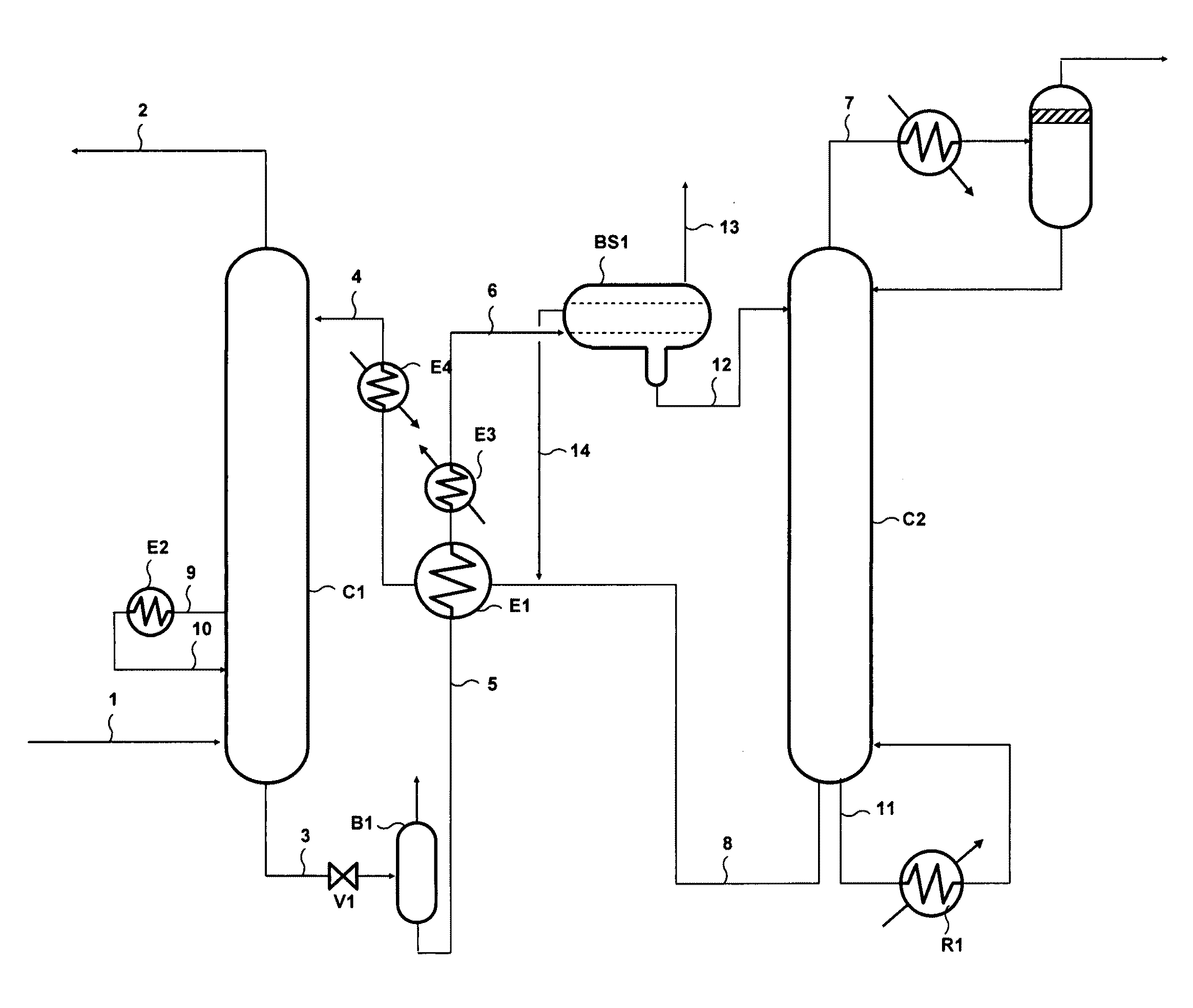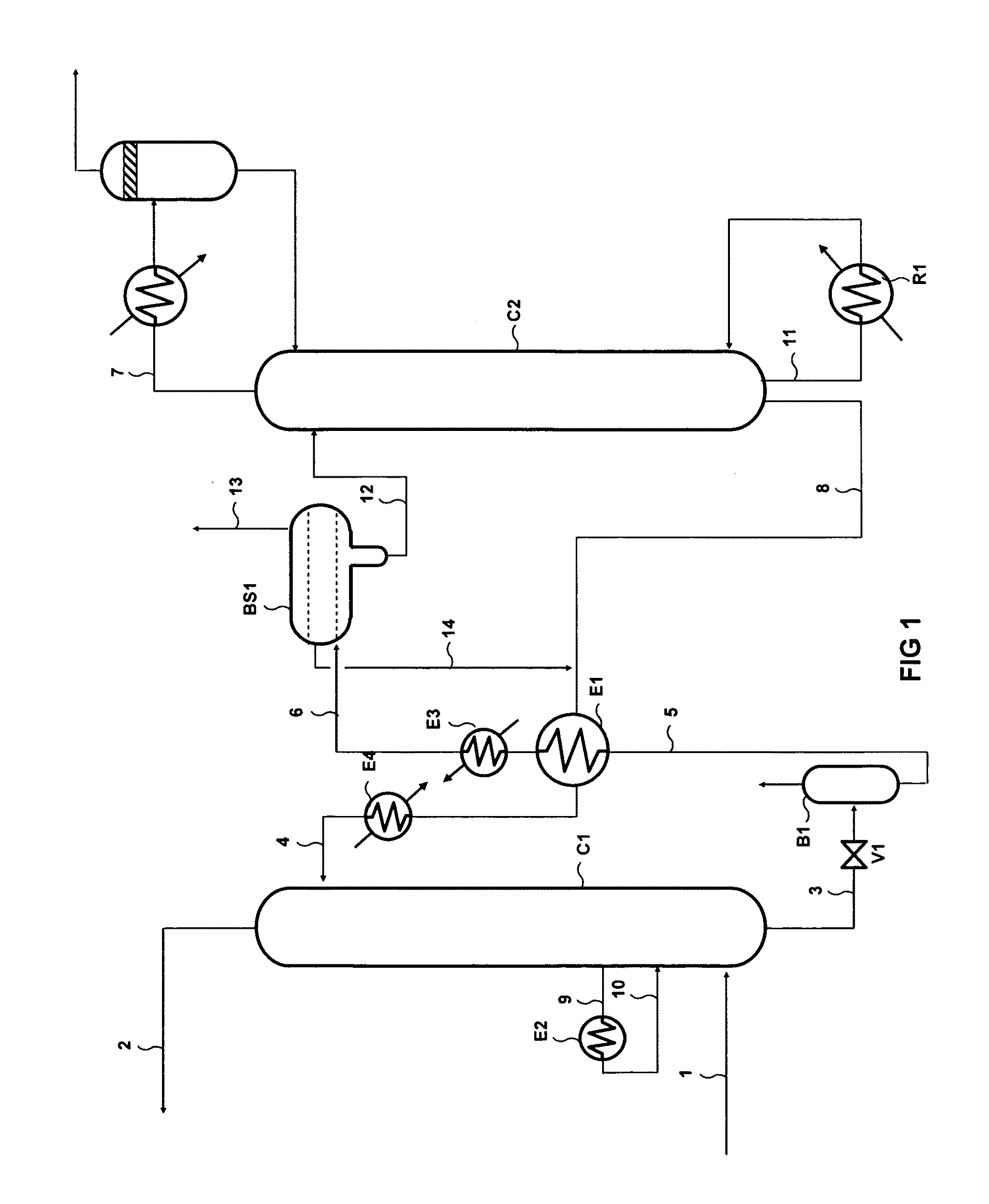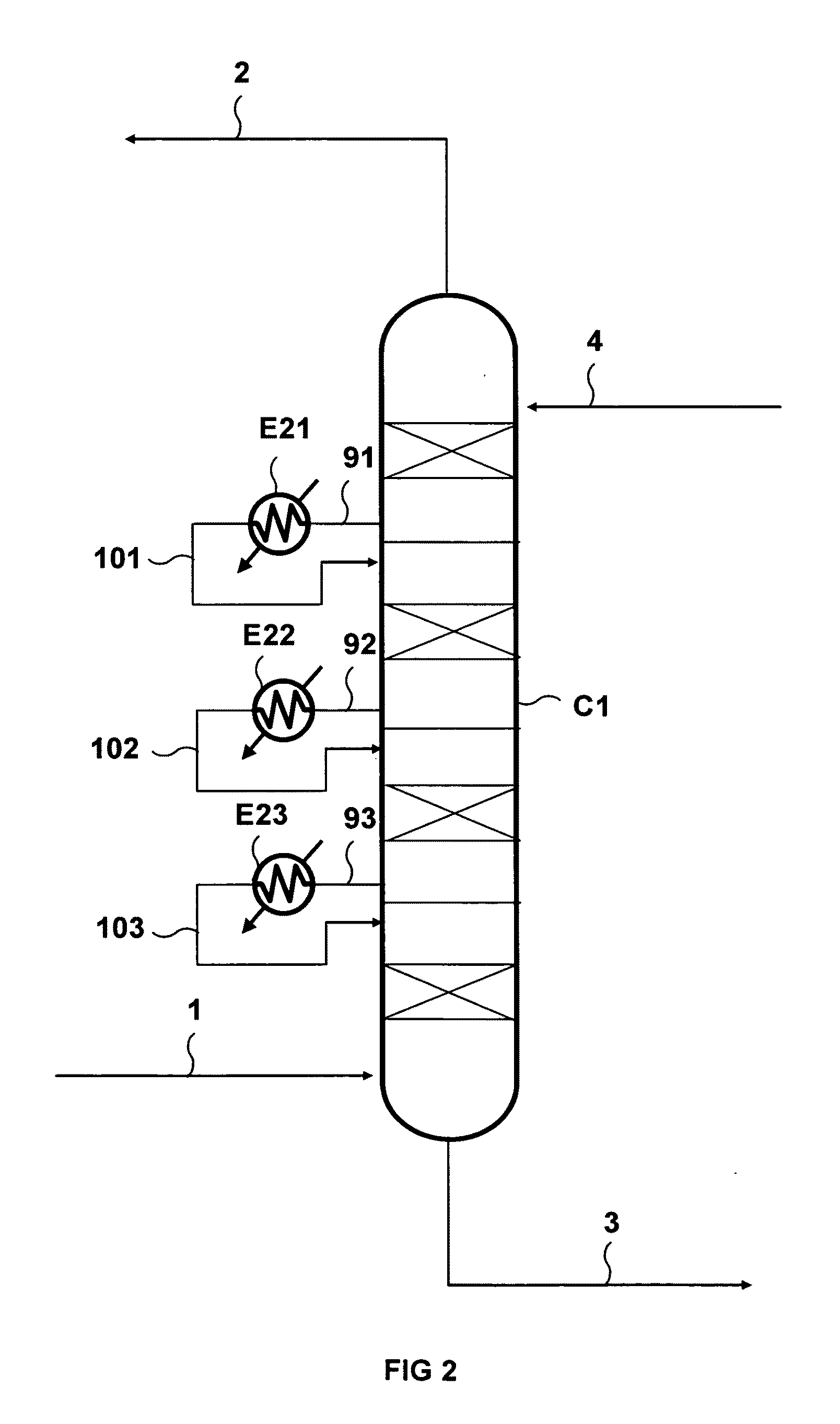Gas deacidizing method using an absorbent solution with demixing control
a technology of absorbent solution and gaseous effluent, which is applied in the direction of using liquid separation agent, chemical separation, inorganic chemistry, etc., can solve the problems of uninteresting cosub>2 /sub>capture by absorption, not allowing optimum operating conditions for the process, and expensive regeneration of absorbent solution laden with acid compounds. to achieve the effect of conserving the absorption performance of the solution
- Summary
- Abstract
- Description
- Claims
- Application Information
AI Technical Summary
Benefits of technology
Problems solved by technology
Method used
Image
Examples
Embodiment Construction
[0030]In FIG. 1, the gaseous effluent to be deacidized circulating in line 1 is contacted in absorption column C1 with the absorbent solution flowing in through line 4. The deacidizing method according to the invention can be applied to various gaseous effluents. For example, the method allows to decarbonate combustion fumes, to deacidize natural gas or a Claus tail gas. The method also allows to remove the acid compounds contained in synthesis gas, in conversion gas in integrated coal or natural gas combustion plants, and in the gas resulting from biomass fermentation.
[0031]In column C1, the reactive compounds of the absorbent solution react with the acid compounds to be collected so as to form a salt soluble in the solution. The gas depleted in acid compounds is discharged from C1 through line 2. The absorbent solution enriched in acid compounds in form of salts dissolved in water is discharged from C1 through line 3. This absorbent solution enriched in acid compounds however comp...
PUM
| Property | Measurement | Unit |
|---|---|---|
| temperature | aaaaa | aaaaa |
| temperature | aaaaa | aaaaa |
| temperature | aaaaa | aaaaa |
Abstract
Description
Claims
Application Information
 Login to View More
Login to View More - R&D
- Intellectual Property
- Life Sciences
- Materials
- Tech Scout
- Unparalleled Data Quality
- Higher Quality Content
- 60% Fewer Hallucinations
Browse by: Latest US Patents, China's latest patents, Technical Efficacy Thesaurus, Application Domain, Technology Topic, Popular Technical Reports.
© 2025 PatSnap. All rights reserved.Legal|Privacy policy|Modern Slavery Act Transparency Statement|Sitemap|About US| Contact US: help@patsnap.com



